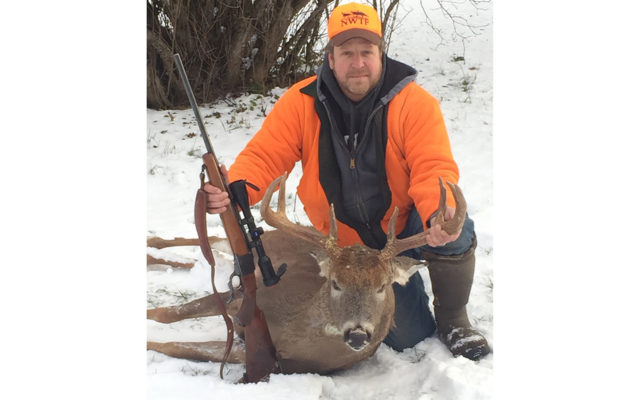
Half a dozen of us, clad in various combinations of wool and fluorescent orange, gathered for lunch recently. During the meal, many topics related to deer hunting were discussed and one that garnered a good deal of discussion and a bit of dissension was sights for whitetail rifles. One fact everyone agreed on was that the variety and technical improvement of scopes and sights over the last 50 years is amazing and a great boon for sportsmen.
A hundred years ago, the venerable old .30-.30 was king of the forest here in Maine. Most bucks were bagged at close range with open sights and it was rare to see a scoped long gun. Even today, with the vast array of scopes, red dots and laser sights, a good number of hunters who prefer to track and still-hunt deer in thick brush and dense forest opt for open sights. I have a couple of .270s with top rated scopes for open country, but still favor my aging model 81 Woodsmaster 35 Remington topped with a very accurate peep sight in heavy cover.
- Mitch Wheeler of Bridgewater does a lot of field hunting from stands and on foot and deer are often spotted a long distance away. A variable scope with clear optics assures that a quick clean shot puts venison on the table (Contributed photo/Bill Graves)
Red dot sights have a fast growing number of fans. These lightweight, compact sights initially were created for handgun use but quickly caught on with rifle and even shotgun shooters. These point and shoot sights are excellent for quick target acquisition and work best at short yardage, thus they have become essential for weapons used by police and military personnel.
Despite the fact that most red dot sights feature no magnification, they are finding a niche with many deer hunters, especially for use in heavily wooded areas. Red dot sights actually offer green or orange aiming dots as well and these aiming spots come in three different sizes. Also the brightness of the aiming dots can be quickly adjusted manually for the sharpest sight picture in low light or brightest sunlight.
While a handful of red dot sights offer up to a 4X magnification, they are best when used at 200 yards or less on big game targets such as deer, and 100 yards for the models with no magnification. A couple of companies offer a separate magnifying lens that can be easily flipped into alignment or out of the way for individual shooting situations.
Aimpoint Company originated the red dot sight and it remains very popular for target shooting and hunting. Trijicon, Bushnell, Sight Mark and EOtech are other well tested options and prices range from less than $100 to over $600 for various models with a wide selection of features. Some high end red dot sights offer laser and holographic options for precision shooting and pin point accuracy.
Of course the most common optic currently used on most deer rifles is a scope, and currently no less than 25 companies are manufacturing a wide variety of target magnifying products. Without exaggeration, the available options and features to select from would easily top a thousand possible choices. Lets narrow the field to those best suited to whitetail hunting in Maine.
First choice is selection of either a single magnification scope or a variable power unit. A 4X or 4 power is the most popular for hunters who use their rifle for forest and field and want an inexpensive option in the $100 range. Variable power scopes in the 2- to 7X or 3 X 9 power range are great options for regional deer hunters who visit open fields and forests and may require a quick change of sight picture.
The next step, a very personal one, is which sight reticle, or pattern, to select. My dad favored a post and crosshair so that’s what I learned to shoot with and still have it on some of my scopes. Most gunners learned on a crosshair scope which is still very common today, but a new version called a duplex is fast gaining favor. Like the post and crosshair, the duplex has heavy, dark edges that show up well at dusk and in low light conditions.
There are dozens of scope configurations with fancy reticle dashes, dots and hash marks to help figure distance for long range shots or to account for windage. These are mostly for very long range targets well over 300 yards on sheep, elk, antelope and other open country big game. The one feature for deer rifle scopes I do like is a lighted reticle with a single lighted center dot you can turn on or off. Leupold offers it in the Firedot models and Bushnell also produces a lighted scope.
Price ranges from a couple of hundred to a couple of thousand for a variable power deer hunting scope. It all depends on the name brand, options and especially the amount and quality of the glass used in the lenses. Many now come with a repair or replace lifetime guarantee, a piece of equipment to be handed down from generation to generation.
Selecting any piece of optics, rifle scope, binoculars, rangefinder or spotting scope is never simple. Read articles by experts, check online tests and reports, personally look at each option, and get advice from experienced friends. It’s not just a matter of personal satisfaction and a fair amount of money, it’s crucial to fair chase and a dependable, lethal shot selection. A responsible hunter needs to be sure the 8 point, 200 pound whitetail in the scope will end up in the freezer and on the game room wall.








